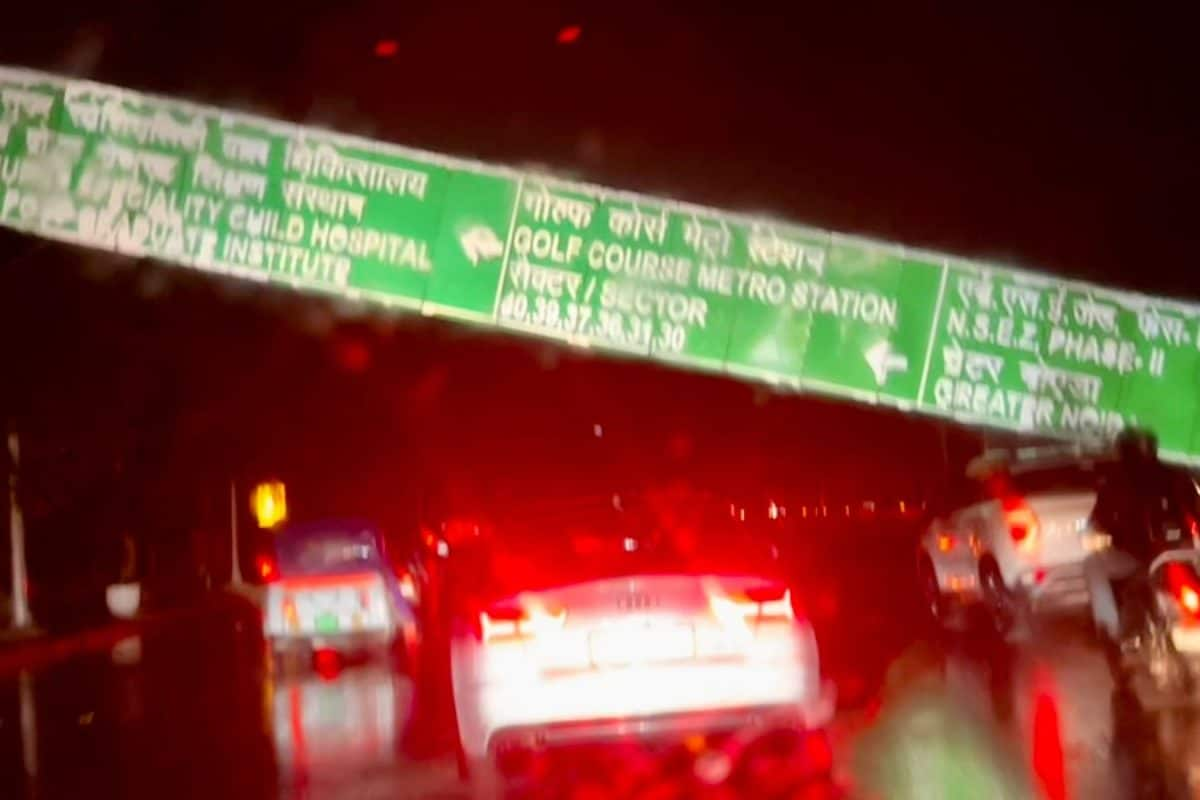

Delhi-NCR experienced a dramatic and sudden weather shift on Wednesday, May 21, 2025, as a fierce dust storm quickly transitioned into a hailstorm, offering respite from days of intense heat but also causing widespread disruption. The extreme change was captured in numerous viral visuals shared across social media platforms, highlighting the rapid shift from dusty skies to rain-soaked streets.
For days, Delhi-NCR had been sweltering under temperatures soaring above 40°C (104°F). The "feels like" temperature even touched a staggering 50.2 degrees Celsius (122.4 degrees Fahrenheit) due to high humidity. The maximum temperature reached 40.7 degrees Celsius (105.3 degrees Fahrenheit), slightly above the normal, while the minimum was a record high of 30.2 degrees Celsius (86.4 degrees Fahrenheit). The air quality had also deteriorated, with the Air Quality Index (AQI) in the "poor" category, further compounding the discomfort.
The day began with a thick layer of dust engulfing Delhi-NCR, reducing visibility across key areas. The India Meteorological Department (IMD) reported winds blowing at 15-25 kmph, with gusts up to 35 kmph, stirring up dust from dry ground. Areas such as Akshardham and Kartavya Path were shrouded in haze, impacting morning commutes and daily routines. Concerns about long-term health impacts arose, with doctors advising residents to stay indoors, remain hydrated, and wear masks to filter out dust particles.
However, the oppressive heat and dust were soon replaced by a sudden and intense hailstorm and rainfall. The change began in the evening, with strong winds sweeping across the region. Safdarjung recorded wind speeds of up to 79 kmph, while Palam reported gusts reaching 72 kmph. The unexpected shift was attributed to a cyclonic circulation over Haryana and neighboring areas, further influenced by moisture-laden winds from the Arabian Sea and the Bay of Bengal.
The hailstorm struck various parts of Delhi-NCR, including Lodi Road and Noida, adding to the dramatic weather transformation. Videos circulating online showed trees shaking violently, debris flying through the air, and streets covered in hail. The storm brought down the temperature, providing immediate relief from the scorching heat. In Noida, temperatures dropped to 33 degrees Celsius (91.4 degrees Fahrenheit).
The sudden weather change caused significant disruptions. Over 100 flights were delayed at Delhi's Indira Gandhi International Airport, and airlines issued advisories urging passengers to check their flight status. Waterlogging occurred in low-lying areas, leading to traffic congestion and slow-moving vehicles. Uprooted trees and blown-over hoardings added to the chaos, particularly in central and south Delhi. There were reports of minor accidents due to waterlogged roads and reduced visibility.
Despite the chaos, the storm was largely welcomed as a respite from the prolonged heatwave. The IMD issued a red alert for Delhi-NCR, warning of continued intense weather activity throughout the night. Residents were advised to stay indoors, avoid travel, and take precautions to stay safe during the storm.